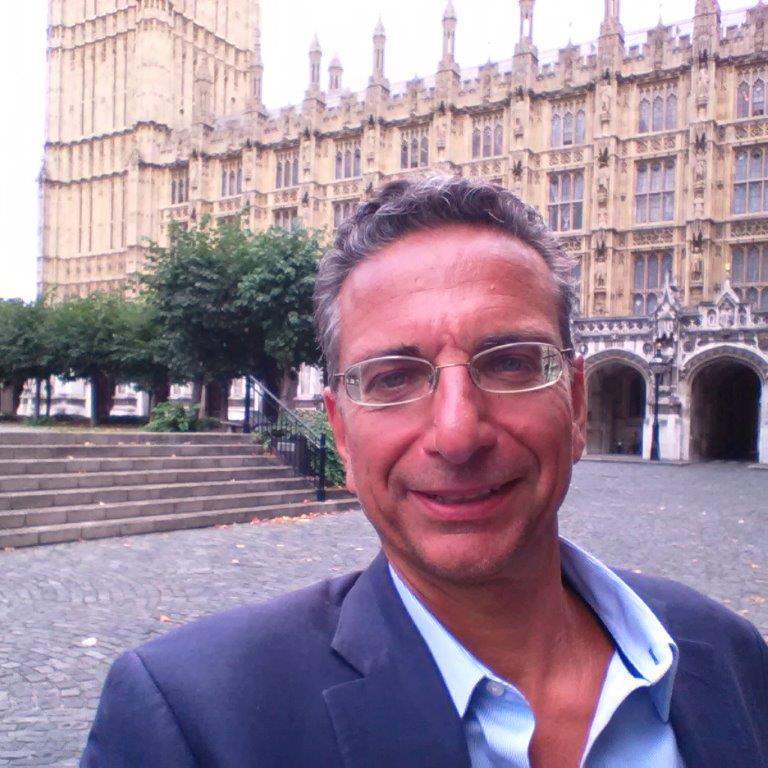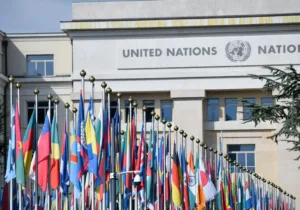In his address to Congress this week, President Trump noticeably declined to mention his Byzantine relationship with Russia. The president defends his friendly posture toward Russia—including his campaign’s high-level contacts with Moscow, his praise of Vladimir Putin, and his selection of a Secretary of State with close business ties to the regime—as an effort to win Russian cooperation in the fight against the Islamic State. “Having a good relationship with Russia is a good thing,” Trump explains, “not a bad thing.”
We’ve heard arguments like these before, by the first American president to grant diplomatic recognition to the Soviet Union: Franklin D. Roosevelt. Against the objections of State Department hawks, FDR reached out to Joseph Stalin in 1933, the first year of his presidency. Twelve years later, after a campaign to convert the communist dictator into “Uncle Joe,” the noble war-time ally, the president’s pro-Russia policy was in shambles.
Like Mr. Trump, who brushes aside allegations of Putin’s involvement in war crimes and political assassinations, Roosevelt’s policy depended on a willful disregard for the most brutal acts by the regime in Moscow.
At the moment that FDR established diplomatic relations with the Soviet Union, for example, Stalin was engaged in a terror campaign against the nation’s farmers. In 1929, he ordered the “collectivization” of agriculture, but the “kulaks,” land-owners who belonged to the middle class, resisted. The state murdered them—many were put on trains bound for death camps—and seized their grain. The result was a man-made famine and mass starvation. By the spring of 1933, the famine was killing 25,000 people a day in the Ukraine. It is estimated that between 10 million and 14 million Soviet citizens suffered unnatural deaths between 1929 and 1934.
Though aware of the Soviet policy, Roosevelt made sure no one in the White House or the State Department discussed it publicly. “I trust that the relations now established between our peoples may forever remain normal and friendly,” he wrote to the Kremlin in November 1933, “and that our Nations henceforth may cooperate for their mutual benefit and for the preservation of the peace of the world.” Historian James Mace, former director of the US Commission on the Ukraine Famine, concluded that the Roosevelt administration participated in “perhaps the single most successful denial of genocide in history.”
From the moment that Nazi Germany attacked the Soviet Union, in June 1941, the transformation of Stalin into a champion of democratic values began. At a White House dinner, Roosevelt prodded Hollywood producer Jack Warner to make a propaganda film, Mission to Moscow, based on the bestselling book by Joseph Davies, his former ambassador to the Soviet Union. In the 1943 movie, Stalin is portrayed as a courageous, pipe-smoking defender of the Russian people. Davies himself—who throughout the 1930s rationalized Stalin’s purges and show trials as necessary to national security—appears in the film’s opening credits to help dispel “prejudice and misunderstanding” about the Soviet Union. Author Saul Bellow, a man of the left, once called Davies “one of the most disgraceful appointments in diplomatic history.”[1]
In 1943, the same year Hollywood released Mission to Moscow, mass graves were discovered by the German military in a forest in Soviet-controlled eastern Poland. On Stalin’s secret orders, the Red Army had executed at least 22,000 people: officers, doctors, professors, lawmakers, and priests. The largest massacre occurred in Katyn Forest. Each officer’s hands were tied behind his back before being shot with a single bullet through the base of the skull.
Under pressure, Roosevelt instructed his emissary to the Balkans, George Earle, to look into the incident. Convinced of Soviet guilt, Earle presented his evidence to the president. FDR dismissed the story as “German propaganda and a German plot.” Forbidden to publicly release his findings, Earle was transferred to Samoa. As historian Allen Paul observes: “Roosevelt himself was determined that US handling of the Katyn controversy should not offend the Soviets.”[2] After decades of denial, official Soviet documents released in 1992 showed that Stalin was directly involved in the crime.
Roosevelt believed there were vital US interests at stake in maintaining strong relations with the Soviet Union: we needed their help to defeat the Nazis, and we wanted their help in the war against Japan.
The problem for the president—and for the American public—was that he seemed to believe the utterly false portrait of Stalin he helped to create. After his first meeting with the Soviet leader, in 1943 in Tehran, Roosevelt concluded: “I believe he is truly representative of the heart and soul of Russia; and I believe that we are going to get along very well with him and the Russian people—very well indeed.”
Yet barely fourteen months later, the dream of Russian cooperation with the West was turning into fairy dust. Almost immediately after the Yalta Conference in February 1945—where Stalin committed himself to a democratic future for Europe—the Soviet Union consolidated its control over those nations “liberated” by the Red Army. There would be none of the promised democratic elections in Poland or Eastern Europe. In March, FDR complained bitterly to an aide: “He has broken every one of the promises he made at Yalta.” In May, alarmed at Soviet designs on the continent, Winston Churchill actually instructed his military advisors to devise “Operation Unthinkable,” a plan to attack the Soviet Union.
Like Roosevelt, Donald Trump seems to believe that the truth about Russian behavior can become a prostitute to political necessity. “It is permitted in time of grave danger,” FDR explained, “to walk with the devil until you have crossed the bridge.” The Trump White House would do well to recall another old maxim: “He who dines with the devil had better have a long spoon.”
—
Joseph Loconte is an associate professor of history at the King’s College in New York City and the author of A Hobbit, a Wardrobe, and a Great War: How J.R.R. Tolkien and C.S. Lewis Rediscovered Faith, Friendship, and Heroism in the Cataclysm of 1914-1918. He is working on a book about the 1945 Yalta Conference.
Photo Credit: Joseph Stalin, Franklin D. Roosevelt, and Winston Churchill on the portico of the Soviet Embassy during the Tehran Conference. November, 28 1943. By U.S. Signal Corps, via Library of Congress and Wikimedia Commons.
[1] Saul Bellow, There is Simply Too Much to Think About: Collected Nonfiction, 326.
[2] Allen Paul, Katyn: Stalin’s Massacre and the Triumph of Truth, 317-318.






